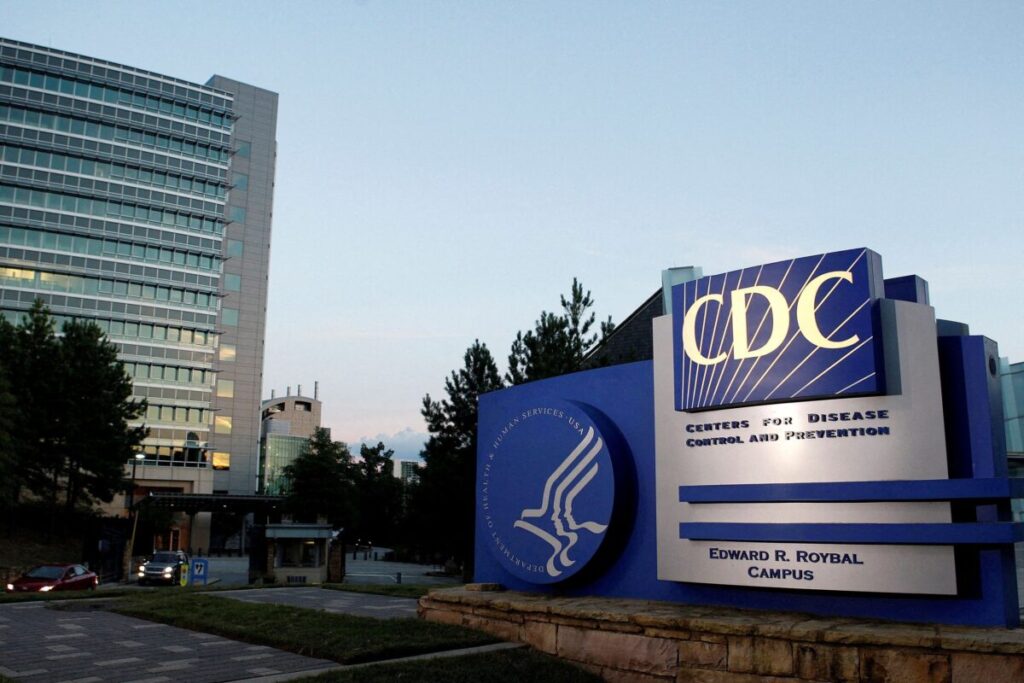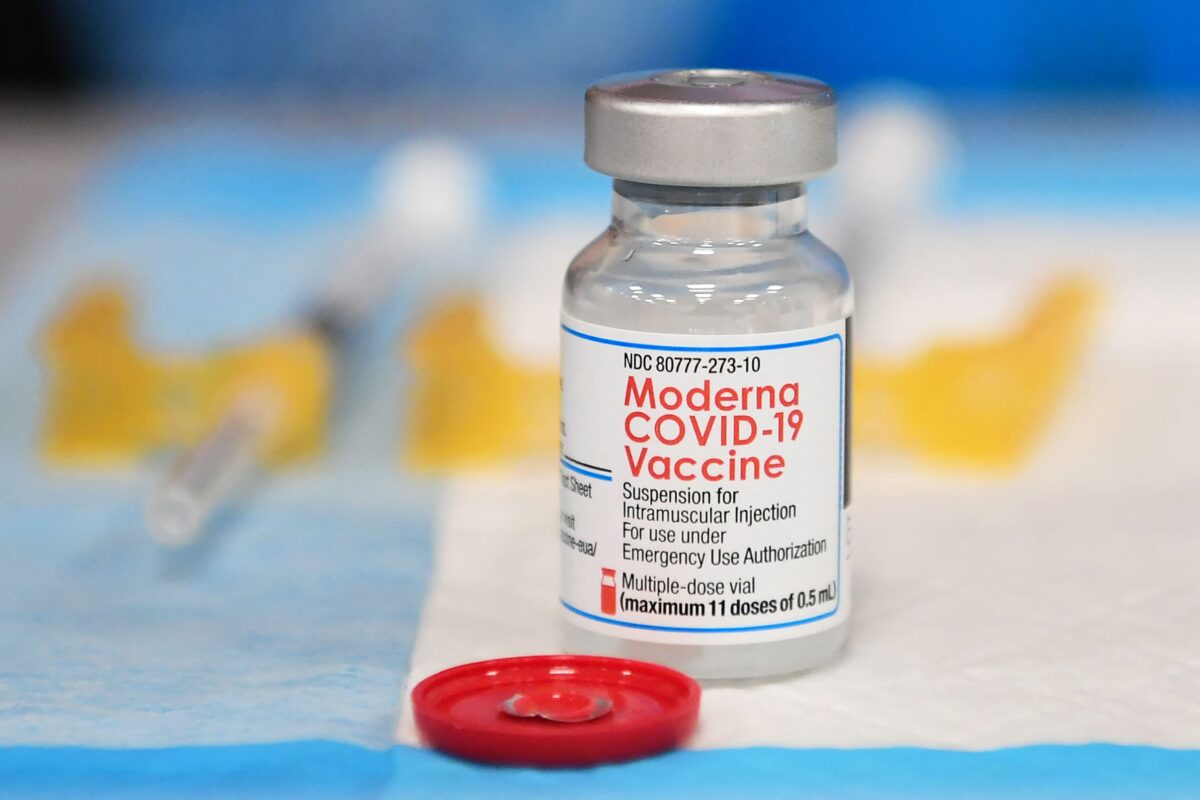
FILE PHOTO: A general view of the U.S. Centers for Disease Control and Prevention (CDC) headquarters in Atlanta, Georgia September 30, 2014. REUTERS/Tami Chappell
By
The Centers for Disease Control and Prevention (CDC) on Feb. 4 outlined an expected change to the COVID-19 vaccine schedule for people with weak immune systems and signaled that a different alteration is coming for the general population to try to cut the number of post-vaccination heart inflammation cases.
The CDC told its vaccine advisory panel that it’s planning to adjust guidance for people with compromised immune systems, a group that doesn’t respond as well to vaccines as the general population and is the only population that is advised to get four doses of the Moderna or Pfizer messenger RNA (mRNA) vaccines.
Current CDC guidance for the immunocompromised says they should receive three doses of an mRNA vaccine within two months, and a fourth dose at least five months after the third dose.
The revised schedule would recommend the population get that fourth shot as soon as three months after their third one.
For recipients in the population who received the single-shot Johnson & Johnson COVID-19 vaccine, the updated guidance says they should get a second dose at least 28 days after their vaccination, and a third dose as soon as two months later.
The guidance update applies to people 18 and older who received the Johnson & Johnson or Moderna vaccines, and people 12 and up who received the Pfizer jab.
The rationale for the adjustment includes small studies that indicate the immunocompromised are better protected if they get the fourth shot sooner, Elisha Hall, a health education specialist at the CDC, told the panel, the Advisory Committee on Immunization Practices.
The goal is “to help this population that may not be as well protected get their booster dose sooner, particularly with concerns about initial immune response, loss of protection over time, and high community transmission due to the Omicron variant,” she said.
Omicron is the dominant variant of the CCP (Chinese Communist Party) virus in the United States. The CCP virus causes COVID-19.
The vaccines already were waning in protection over time against infection while the Delta variant was dominant in the country, and have performed even worse against the Omicron strain.

A vial of Moderna’s COVID-19 vaccine in Los Angeles, Calif., on Dec. 15, 2021. (Frederic J. Brown/AFP via Getty Images)
Dr. Camille Kotton, an infectious disease expert at Massachusetts General Hospital and a panel member, said she had seen many immunocompromised patients in the past two months who “followed all the rules,” including the recommended vaccination schedule, but still became infected with the virus.
The updated guidance “will help dramatically,” she said.
The other likely change would apply to the general public and deals with the length of time that elapses between the first and second shot of the mRNA vaccines. Both have a two-dose primary schedule.
At present, the second Pfizer dose is recommended around 21 days after the first, and the second Moderna dose is recommended around 28 days after the initial shot. However, surveillance data show that among many age groups, particularly young males, who have received the vaccines, there has been a higher than expected rate of heart inflammation.
Data from Canada and England, which have both extended the interval, suggest an extended time period between the first and second doses increased vaccine effectiveness and lowered rates of myocarditis and pericarditis, two forms of heart inflammation that have cropped up following mRNA vaccination.
“The longer interval resulted in lower myocarditis rates, whereas the shorter interval had higher myocarditis and pericarditis rates,” said Dr. Bryna Warshawsky of the Public Health Agency of Canada.
Dr. Grace Lee, a medical officer at the Lucile Packard Children’s Hospital and the advisory panel’s chair, said the data presented “are fairly convincing that an extended interval is not only potentially safer from a myocarditis standpoint, but also potentially more effective.”
The data pertain to when Delta was the dominant variant in much of the world. Omicron displaced Delta in December 2021 in the United States.
Some countries have halted or curtailed the use of the mRNA vaccines, particularly Moderna’s, among youths due to the heart inflammation issues, but U.S. health authorities have so far continued to recommend the shots for all Americans 5 and older, asserting the vaccines prevent more hospitalizations than the heart inflammation cases they cause.
The panel’s COVID-19 vaccines working group, after analyzing altered vaccine schedules from various countries, endorsed an interval of eight weeks between the first and second dose of an mRNA vaccine primary series. The CDC hasn’t yet decided whether to follow the advice.
If changed, the revised schedule could affect millions of people. Some 33 million Americans aged 12 to 39 remain unvaccinated, as well as tens of millions of Americans in older age groups. It would also push back booster shots, which are currently recommended five months after the Moderna or Pfizer primary series, and two months after the initial Johnson & Johnson shot.
Dr. Walid Gellad, a professor of medicine at the University of Pittsburgh, called the expected change “a big deal.”
At the same time, it is “troubling” that it “took so long for US policymaking to catch up to other countries,” Gellad, who is not on the panel, wrote on Twitter.
Panel members said they hoped the change would help convince unvaccinated people to get a jab.
“I think that it affords a level of safety and also demonstrates to the public that we are very focused on doing this in the right way,” said Dr. Oliver Brooks, chief medical officer of Watts HealthCare Corp.